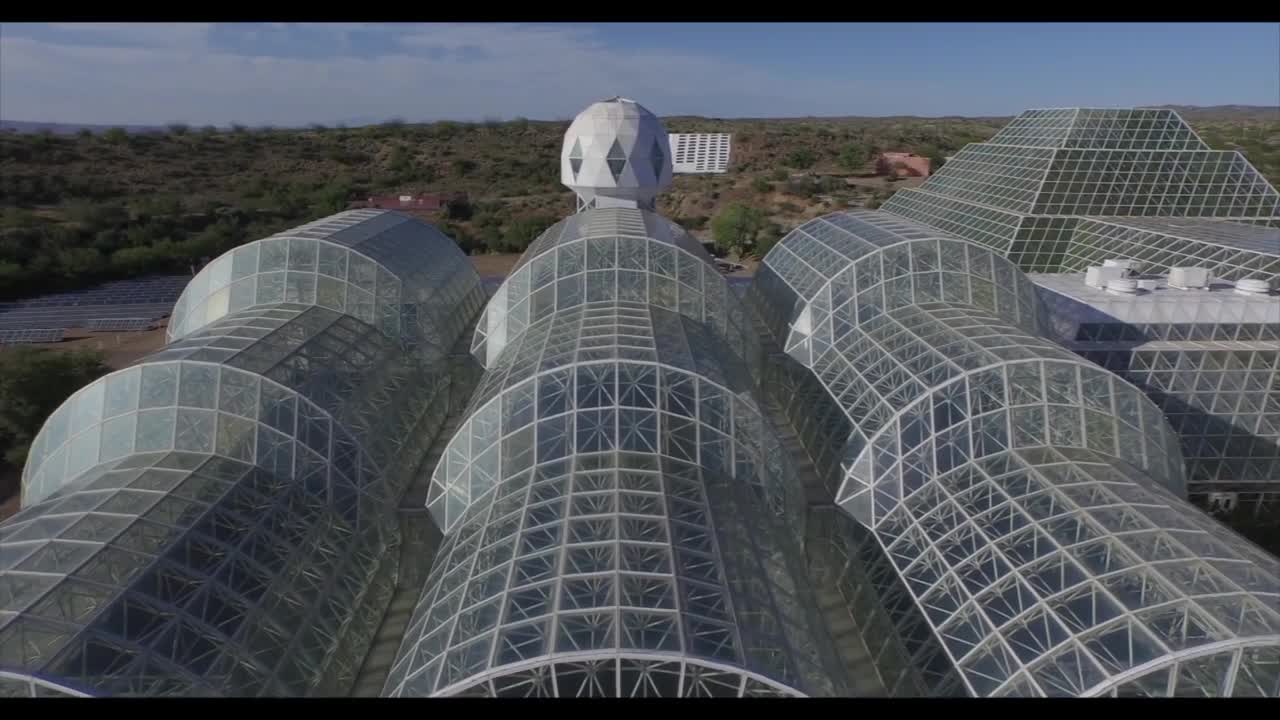Biosphere 2 started with eight scientists and a very ambitious experiment.
Now, almost 35 years later, it's still being used for cutting-edge research.
Scientists continue to use it to study Earth's problems and find creative solutions.
And the whole thing started in grand fashion.
When Biosphere 2 first launched in Sept. of 1991, it captured the world's imagination.
"And then the moment finally arrived," said KGUN 9 news reporter Mark Horner, who covered the event. "All eight inside Biosphere 2. The hatch sealed for two years."

Four men and four women took part in the experiment.
Biosphere 2 would be the first step in space colonization.
This was the $150 million idea financed by billionaire Ed Bass.
"This was all coming about sort of in the early-to-mid '80s," said John Adams, the current deputy director of Biosphere 2. "They actually started construction in 1987 and completed in 1991. But the underlying foundation for Biosphere 2, and the reason they built it, was to better understand Earth's systems."
To understand Earth, or Biosphere 1, they constructed an engineering marvel. The impressive glass and steel structure covers over three acres.
"They put a rain forest, an ocean, a savanna, a mangrove, a desert," Adams said.
All to help Earth's systems and to support the full-scale experiment that began in 1991.
"Eight people were sealed inside," Adams said. "Their objective and goal was to stay inside for two years, and only be dependent on those resources which were inside the facility."

The crew did run into several challenges.
Oxygen levels began to fall dangerously low because of an imbalance between plants and soil.
So, they had to add extra oxygen.
Despite a productive agricultural system, they also had trouble feeding all eight people.
Plus, there was an interpersonal clash between members of the group.
When the Biospherians exited exactly two years later, some labeled it a failure.
"I would argue with anybody that Biosphere 2 was absolutely not a failure," Adams said. "In fact, it's still here being used for cutting-edge research by the University of Arizona."
The UA took over Biosphere 2 in 2011 and continues to use the facility for research, like Leo, the Landscape Evolution Observatory.
Under the three side-by-side greenhouses is the first-of-its-kind earth science experiment, trying to better understand the fate of water.

"Specifically, it rains in the mountains," Adams said. "How much water ends up downstream for you and I to use? As the landscape changes, how does that impact not only the quantity but also the quality of that water?"
Nearby is the rain forest, which provided bananas to the Biospherians during their mission. Now it's used for research.
Several years ago, Scientists turned off the water for six weeks to simulate a drought.
"Rain forest bounced back incredibly well," Adams said. "In fact, it's incredible as to how dense the vegetation has gotten since the time that we just brought it out of that drought."
Right next door to the rain forest is an ocean and a third project at Biosphere 2.
"This tank is roughly a million gallons," Adams said.
That's right, here in the desert, UA researchers continue to study the effects of rising temperatures and CO2 on coral and sea life on this reef.

Finally, in the Desert biome, the university recently released endangered Sonoyta pupfish into a newly completed stream environment.
"Now we are becoming a safe haven for a species of fish that is endangered and I'm thrilled we can do that," said Joaquin Ruiz, director of Biosphere 2. "It has to do with the scale of the place."
The stream cascading down a slope provides refuge for the pupfish. The critically endangered fish were once found throughout our area.
Now, they're only found in the southwest portion of Organ Pipe National Monument, near the international border, in the Quitobaquito Springs.
"It's a testament to just how innovative this facility and structure are that 35 years later we're still using it for relevant research, education and outreach."
——-
Pat Parris is an anchor and reporter for KGUN 9. He is a graduate of Sabino High School where he was the 1982 high school state track champion in the 800 meters. While in high school and college, he worked part-time in the KGUN 9 newsroom. Share your story ideas and important issues with Pat by emailing pat.parris@kgun9.com or by connecting on Facebook, Twitter, and Instagram.





